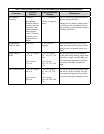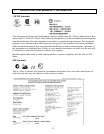
3
Connect the UPS to the Network (if Applicable)
Network Connectors
Serial Port
Telephone/Network
Surge Suppression Ports
Use only interface kits approved by APC.
Use only the supplied cable to connect to the Serial Port. A standard serial interface cable is incom-
patible with the UPS.
The UPS features optional telephone/network surge suppression. Connect a single line telephone or a
10 Base-T/ 100 Base-Tx network cable into the RJ-45/RJ-11 telephone/network surge protection IN
jack on the back of the UPS. Use a telephone cable (not supplied) or network cabling (not supplied)
to connect the OUT jack to a fax modem or network port.
Start the UPS
1. Plug the UPS into a two-pole, three-wire, grounded receptacle only. Avoid using extension
cords.
110/120 V models: The power cord is attached to the UPS. The input plug is a NEMA 5-15P.
230 V models: The power cord set is supplied in the UPS literature kit. Attention: Upon utility
power connection, the top outlet is immediately powered; the bottom three outlets are
powered after the UPS performs the self-test.
2. 110/120 V models: Check the site wiring fault LED
located on the rear panel. It will be illu-
minated if the UPS is plugged into an improperly wired utility power outlet (see Troubleshoot-
ing).
3. Turn on all connected equipment. To use the UPS as a master on/off switch, be sure all con-
nected equipment is on.
4. Press the button on the front panel to power the UPS.
Note: The battery charges fully during the first four hours of normal operation. Do not expect
full battery run capability during this initial charge period. Refer to www.apc.com
for battery
runtimes.
5. For optimal computer system protection, install PowerChute Business Edition management soft-
ware to fully configure UPS shutdown and alarm settings.
















